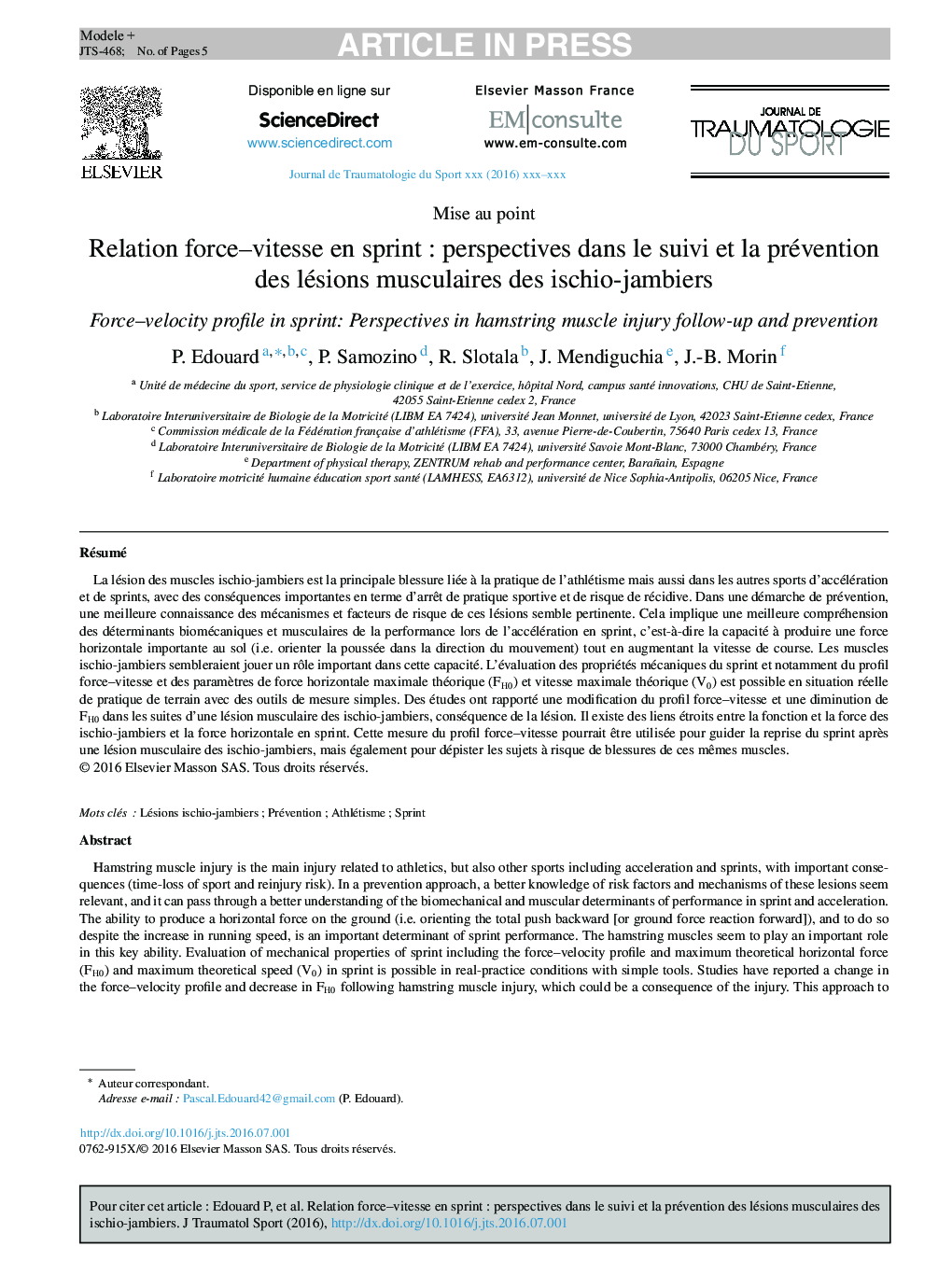| Article ID | Journal | Published Year | Pages | File Type |
|---|---|---|---|---|
| 8801413 | Journal de Traumatologie du Sport | 2016 | 5 Pages |
Abstract
Hamstring muscle injury is the main injury related to athletics, but also other sports including acceleration and sprints, with important consequences (time-loss of sport and reinjury risk). In a prevention approach, a better knowledge of risk factors and mechanisms of these lesions seem relevant, and it can pass through a better understanding of the biomechanical and muscular determinants of performance in sprint and acceleration. The ability to produce a horizontal force on the ground (i.e. orienting the total push backward [or ground force reaction forward]), and to do so despite the increase in running speed, is an important determinant of sprint performance. The hamstring muscles seem to play an important role in this key ability. Evaluation of mechanical properties of sprint including the force-velocity profile and maximum theoretical horizontal force (FH0) and maximum theoretical speed (V0) in sprint is possible in real-practice conditions with simple tools. Studies have reported a change in the force-velocity profile and decrease in FH0 following hamstring muscle injury, which could be a consequence of the injury. This approach to analyze the hamstring propulsion function at a maximum acceleration sprint looks promising given the very functional and ecological character in a field evaluation, close links between the function and strength of hamstring and the horizontal force sprint, and these encouraging preliminary scientific results. This force-velocity profile evaluation could be used to guide the return to sprint and allow authorization to maximum sprint after hamstring muscle injury, but also to screen athletes at risk of hamstring muscle injury.
Related Topics
Health Sciences
Medicine and Dentistry
Orthopedics, Sports Medicine and Rehabilitation
Authors
P. Edouard, P. Samozino, R. Slotala, J. Mendiguchia, J.-B. Morin,
